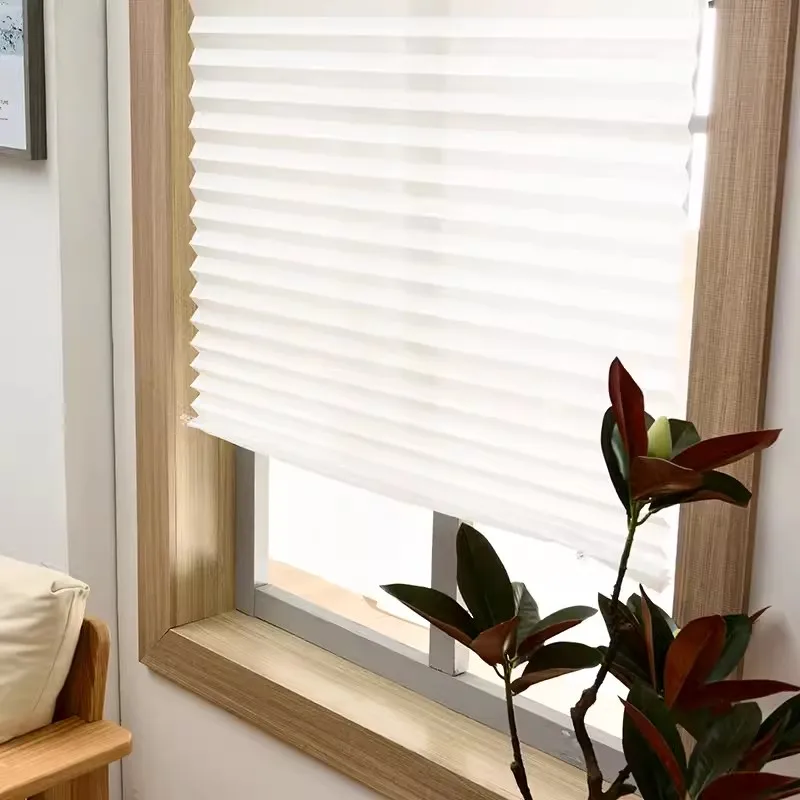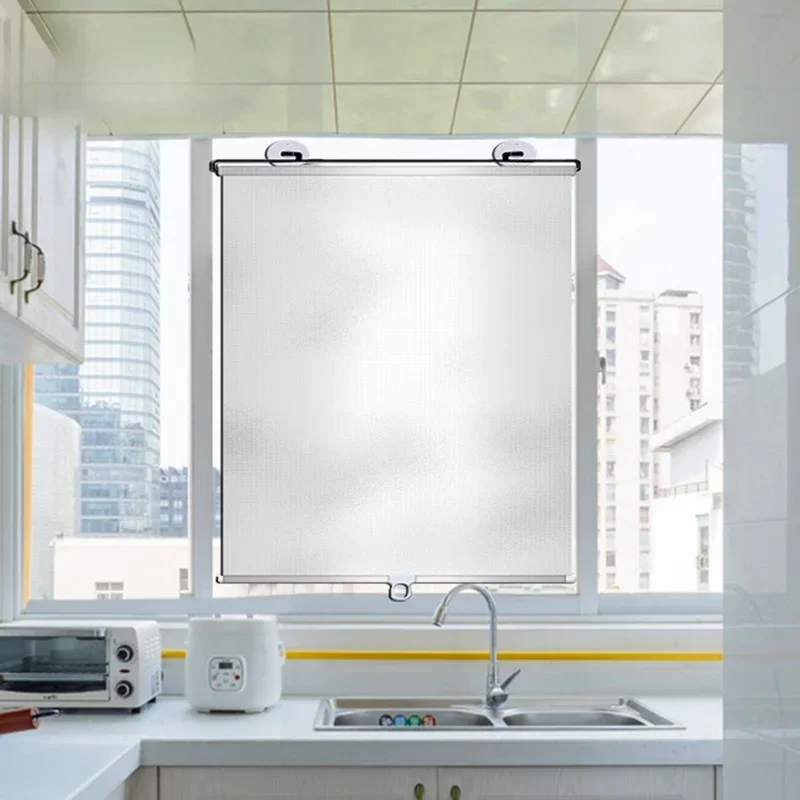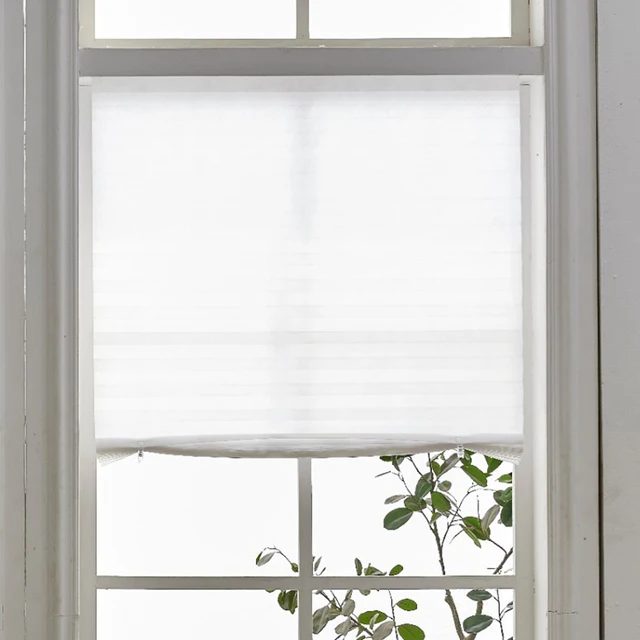Choosing the Right Blinds for Your Home
Choosing the right blinds is crucial to match your decor and meet your needs. Whether you seek privacy, light control, or aesthetic appeal, options abound. Here’s how to pick the perfect blinds for your home.
Types of Blinds
Blinds come in various styles, each with unique features. Common types include:
- Vertical blinds: Great for patio doors and large windows.
- Venetian blinds: Offer excellent light control with horizontal slats.
- Roller blinds: Simple, sleek, and perfect for blocking out light.
- Roman blinds: Combine the elegance of drapes with the functionality of blinds.
Choose a type that complements your interior and fulfills your specific requirements.
Measurements and Specifications
To install blinds perfectly, accurate measurements are a must. Follow these steps:
- Measure the width: Take three measurements across the window’s width. Use the smallest measurement to ensure a snug fit.
- Measure the height: Measure top to bottom at three points and again use the smallest measurement.
- Decide on the mount: Consider if you prefer an inside mount or outside mount, as this will affect your measurements.
- Check the depth: Ensure there’s enough depth for the blinds to operate smoothly without hitting the window handle or frame.
Take your time with these steps. Correct measurements are essential to ‘install blinds’ seamlessly.

Essential Tools and Materials for Installation
To ‘install blinds’ smoothly, you will need the right tools and materials. Preparation is key to a trouble-free installation process.
Basic Tool Checklist
Start with these essential tools:
- Measuring tape: For accurate window measurements.
- Pencil: To mark where the brackets will go.
- Level: To ensure your blinds hang straight.
- Drill: For making holes for the brackets.
- Screwdriver: To tighten the screws in the brackets.
- Hammer: Might be useful for small adjustments.
Having these tools at hand will make the process easier and more accurate.
Additional Materials Needed
Besides tools, you might need these materials:
- Screws and wall plugs: To secure the brackets in place.
- Brackets: Comes with your blinds set but check if you need extras.
- Blind clips: If your blinds have a valance.
Gather all your materials before you start. This way, you won’t have to stop mid-installation. Next, we’ll guide you through preparing your window space for installation.
Preparing Your Window Space
Before you can install blinds, preparing your window space is vital for a smooth installation process. A clean, clear area ensures your new blinds fit and function correctly.
Cleaning and Clearing the Area
Start with a clean slate. Remove any existing window coverings, stickers, or decals. Clean the window glass, sill, and frame to get rid of dirt and dust. Use a mild cleaner and a soft cloth to avoid damage. Ensure the space around the window is clear. Move furniture or any objects that might get in the way. This makes it easy to access the window for measurements and installation.
A tidy space not only helps with the ‘install blinds’ process but also prevents streaks on the blinds from dirty windows. Clearing the area also minimizes the risk of accidents or damage to your property.
Checking for Obstacles
Look for anything that could hinder the blind operation. Check for window handles, locks, or alarm sensors. Consider how these might affect the blinds. For an inside mount, there should be enough depth to accommodate the blind without interference. For an outside mount, ensure nothing will obstruct the blind when it’s fully extended. If you find obstacles, you may need to choose a different mount or blind style.
Inspect the wall above the window. Make sure it’s suitable for the installation of mounting brackets. If there’s any cracking or instability, you might need to address these issues before proceeding. Double-check that there are no hidden pipes or wires where you plan to drill. This step is crucial for a safe and secure ‘install blinds’ job.
With the window space prepped and ready, you’re set to move forward with installing the mounting brackets, the next step toward your new blinds.

Installing the Mounting Brackets
Mounting brackets are key for keeping your blinds in place. This step requires precision and careful handling. Follow these guidelines for both inside and outside mounting to ensure your blinds ‘install’ correctly and securely.
Inside Mounting
Begin by holding the bracket in place inside the window frame where you plan to ‘install blinds’. Mark the screw holes with your pencil; this is where you’ll drill. Drill the holes at the marked spots. If you hit wood, wall plugs are not necessary. In concrete or drywall, insert the wall plugs. Align the bracket over the holes, then fasten it with screws using your screwdriver. Repeat this for all brackets needed, making sure each one is level.
Outside Mounting
For outside mounting, position the brackets outside the window frame. Consider the blind’s width and length. Mark the spots for the brackets, making sure they align with your ‘install blinds’ measurements. Once marked, drill the holes. Use wall plugs for extra support in drywall or concrete. Screw the brackets in place, ensuring they’re straight and level. With brackets securely installed, you’re now ready to clip in your blinds.
Attaching the Blinds
Attaching your blinds is a straightforward process once the brackets are in place. To secure and ‘install blinds’ correctly, follow these simple steps.
Inserting the Headrail
Start by lifting the headrail of the blinds to the brackets. Tilt the headrail slightly to fit it into the brackets. The front lip should hook onto the bracket first. Next, rotate the headrail back until it snaps into place. You’ll hear a click, confirming a secure fit. Use a level to ensure the blinds are even.
For blinds with a locking mechanism, insert the headrail fully and then close the cover on the bracket. This will lock the headrail in position. Be gentle to avoid bending the headrail or damaging the brackets.
Securing the Blinds
Once the headrail is in, secure the bottom of the blinds. If you have cordless blinds, pull down gently to ensure they extend and retract smoothly. For blinds with a cord, test the lifting and tilting mechanisms. For safety, secure any loose cords with a cleat or a cord tensioner out of children’s reach.
Ensure all parts move without sticking or snagging. Make sure the blinds’ slats rotate open and close properly. If not, check if the headrail is level or if there’s any hindrance. Sometimes, minor adjustments can make a big difference in functionality.
With headrail inserted and blinds secured, you’re almost done. All that’s left is the finishing touches to enhance the appearance and function of your ‘install blinds’ project.

Adding the Valance and Accessories
After successfully installing the headrail and securing the blinds, it’s time to add the final touches. A valance and certain accessories can enhance the visual appeal and functionality of your blinds.
Attaching the Valance
A valance is a decorative piece that covers the headrail, giving your blinds a polished look. To attach it, first locate the valance clips that should have come with your blinds. Position them evenly across the headrail. Next, slide the valance into the clips until it snaps in place. Make sure it fits snugly and aligns with the blinds for a tidy appearance. Adjust if necessary to avoid any gaps or unevenness.
Installing Hold-down Brackets (If Necessary)
In some cases, especially with door-mounted blinds, hold-down brackets are beneficial. They prevent the blinds from swaying. If your blinds came with these brackets, install them at the bottom of the window frame or door. Lower the blinds, mark the spot where the brackets will meet the bottom rail, and drill holes. Secure the brackets with screws. Now clip the bottom rail into the brackets to ‘install blinds’ firmly. This step is optional but recommended for stability and smooth operation.
With the valance attached and hold-down brackets installed, your blinds not only look complete but also function seamlessly.
Tips for Trouble-Free Installation
To ensure a smooth installation process for your blinds, consider these tips. Taking extra care upfront can save time and trouble in the long run.
Reading Manufacturers Instructions
Always read the instructions that come with your blinds. Different types may have unique steps or require specific tools. Look for any safety notes. The guide will often provide helpful diagrams or illustrations. This can make it easier to understand the process. If you skip this part, you might miss key steps and have to start over.
Double-Checking Measurements
Measure your windows twice to avoid mistakes. An inch too short or too long can cause problems. Double-check all measurements before you drill any holes or cut anything. It’s better to spend a little more time measuring than to ‘install blinds’ that don’t fit well.
With these tips in mind, your blinds installation should go more smoothly and result in a more professional-looking finish. Remember to measure carefully, read the guidelines, and take your time with each step.
Maintenance and Care for Your Newly Installed Blinds
After you ‘install blinds’, regular upkeep ensures they stay looking good and function well.
Regular Cleaning
Clean your blinds often to keep them dust-free. Use a soft cloth or a duster. For deeper cleaning, a damp sponge works well on most materials. Don’t use harsh cleaners as they can damage the blinds’ surface. Some blinds, like vinyl, can handle mild soap and water. Make sure to dry them fully to prevent water spots. Remember to clean both sides of the slats.
For fabric blinds, vacuum gently with an upholstery attachment. Spot clean any stains with a cloth dipped in a soap and water mix. Be sure not to soak the material.
Minor Adjustments and Repairs
Sometimes blinds need small fixes to work smoothly. If slats won’t rotate, check the rod isn’t stuck. Gently push it back into place. If a slat is out of alignment, carefully bend it back to its original position. For a blind that won’t stay up, the pawl inside the headrail might need adjusting. Remove the blinds from the brackets and open the headrail. Rotate the pawl down and try raising the blinds again.
If your ‘install blinds‘ project involves corded blinds, ensure the cord doesn’t fray or knot. Cut any frayed ends and tie a small knot to prevent unraveling. Replace cords that show signs of wear to avoid breakage and ensure safety.
Regular care will extend the life of your blinds and keep them working well for years.








